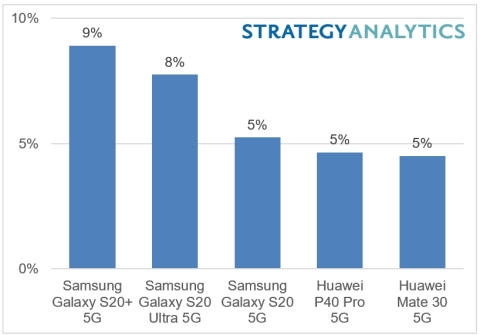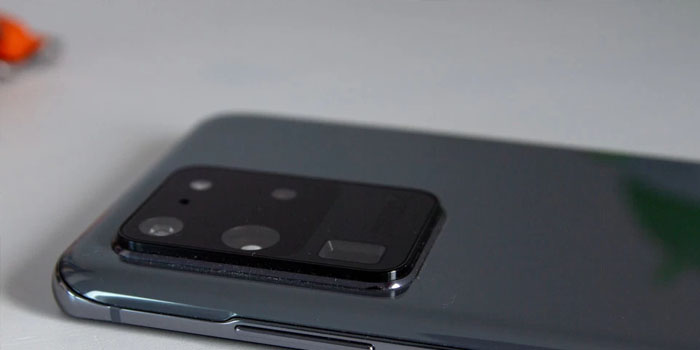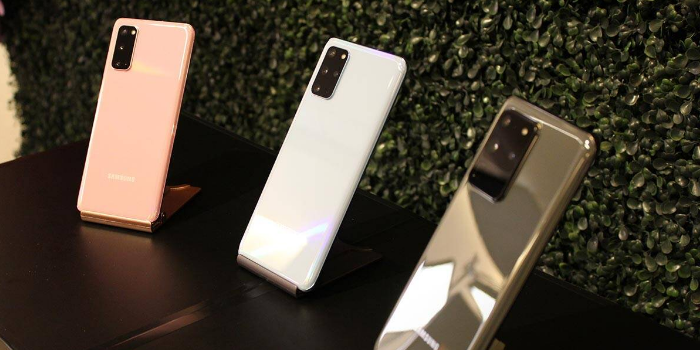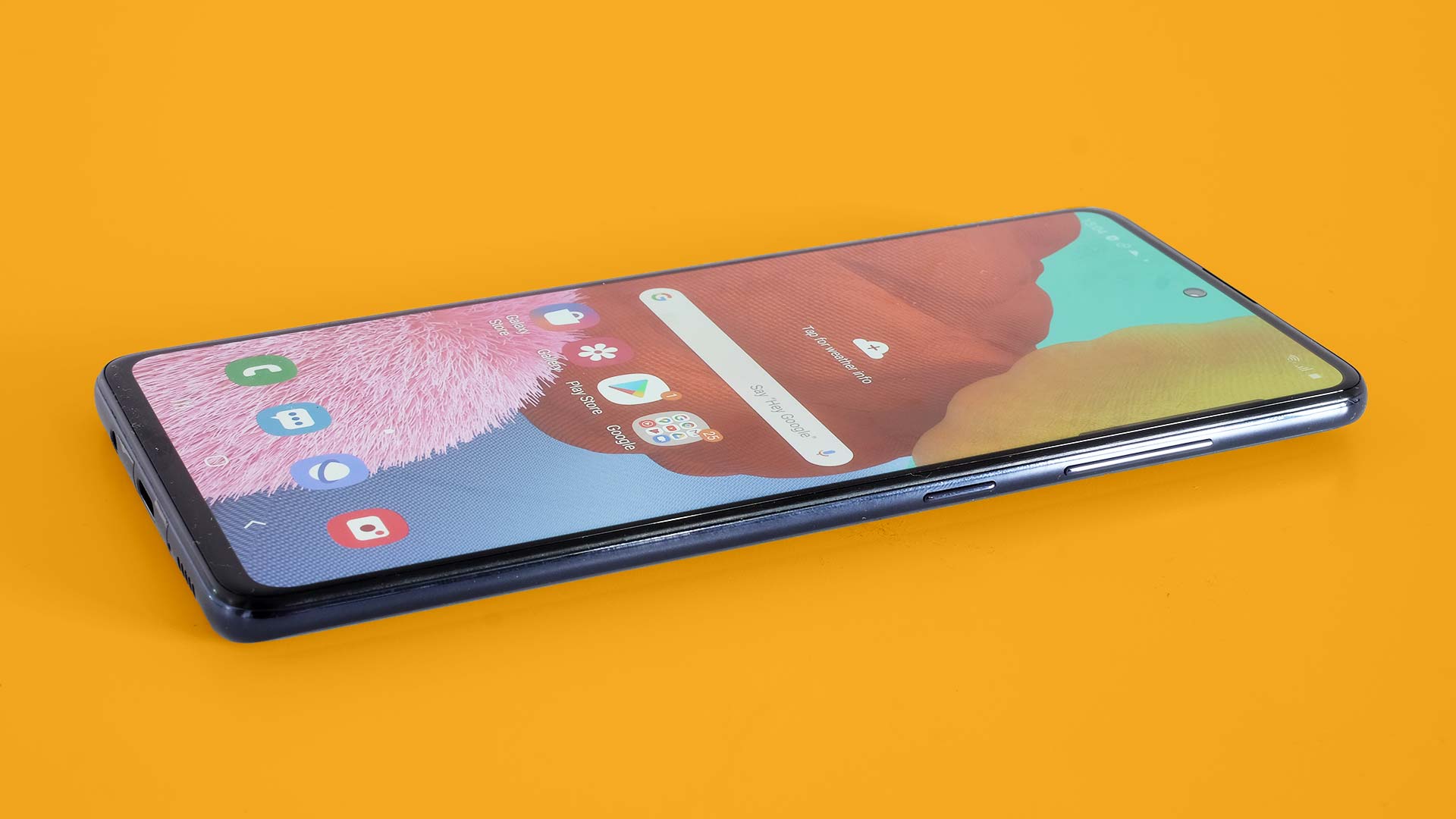
Samsung announced its most elevated ever quarterly income for Q3 2020. It even recovered the main position in the Indian smartphone market following a hole of two years. Presently, it is being accounted for that the Galaxy S20 was the world's top of the line 5G smartphone arrangement.
As indicated by the most recent numbers from market examination firm Strategy Analytics, the Galaxy S20+ 5G was the world's top rated 5G smartphone in the main portion of 2020. The Galaxy S20 Ultra 5G and the Galaxy S20 5G were the following two top-selling 5G smartphones around the world, snatching the second and third positions, individually. The Huawei P40 Pro 5G and the Huawei Mate 30 5G remained at the fourth and fifth positions.
In spite of Samsung's solid presentation in the 5G smartphone market, it is being anticipated that its piece of the pie could decrease in Q4 2020 and the remainder of 2021 as Apple as of late dispatched the iPhone 12 arrangement. Every one of the four iPhone 12 arrangement models-iPhone 12 scaled down, iPhone 12, iPhone 12 Pro, and iPhone 12 Pro Max-accompany worked in 5G availability.
The South Korean smartphone goliath is relied upon to counter Apple by dispatching more mid-reach and section level 5G smartphones in business sectors where 5G networks have been turned out. The Galaxy A42 5G has just been exhibited, and it should dispatch in more business sectors in the coming months.

Samsung Galaxy S20 was launched in the first half of 2020. Though we don't know whether the next S series would be called Galaxy S21 or Galaxy S30 - but we think that S21 will make more sense. Samsung followed sequential numbers until in 2020, the company decided to go for Galaxy S20 instead of S10. It is therefore now harder to know what next year holds for us. Samsung typically launches the S series in February, so we are hoping for the device to be launched somewhere around Feb/March next year.
There are some leaks related to Galaxy S21 ultra that suggest more pronounced camera housing on the rear side of the phone as compared to the Galaxy S20 ultra. The renders also suggest that there will be a centralised punch hole camera at the top side of the display. We are expecting the S21 ultra to be around 6.7 to 6.9 inches with an AMOLED display and a quad HD+ resolution. The phone might feature two telephoto lenses, instead of one. This will increase the camera zoom performance with a 3x and 5x lens being offered. That could mean that you can zoom up to 3x to 5x optical zoom with high-quality imaging results.
Samsung Galaxy S21 will be powered by the next year's Exynos 1000 or Qualcomm Snapdragon 875 for the US version. The phone will support 5G as all other devices might have 5G support next year. The S21 will come in 128GB and 256GB storage options. It's battery capacity is said to be 5,000mAh. According to a twitter user Ross Young, Galaxy S21 will be available in gray, pink, violet, and white colors, and S21 ultra can be purchased in black, silver, and violet options. A report claims that the Samsung Galaxy S21 series could come in early January 2021.

This year we saw Galaxy S20 and now the tech experts are looking for anything they can find about next year's Galaxy S21. There isn't much information on the Galaxy S21 yet but we have some rumors that suggest the possible design of the mobile device. The reputable leaker on social media with username @OnLeaks has shared a few leaked render images on Voice with a phone with a screen of apparently roughly between 6.7 and 6.9 inches. The phone has a punch-hole camera in the top-center and virtually there seem no bezels around the display. The phone features a curved display as it does with a few Galaxy S series phones. The rumors about the curved display isn't confirmed by other leakers who suggest otherwise.
The Galaxy S21 ultra looks similar to other phones from the same series based on the leaked images, but the rear side contains a much larger camera bump in the top-left corner. As per the report, the block is almost twice as big as the one on the regular Galaxy S21. The source expects this to house up to four lenses compared to three on the standard model, and if this leak is right it also features the flash, which leaks suggest sits outside the camera bump on the standard Galaxy S21. We don't know the functionality of these extra lenses but a previous leak suggested that the device might have a 108-MP primary camera sensor, and a 12MP ultra-wide one, with two lenses dedicated to zoom functionality.
Other details suggest that the camera might have dimensions of apparently around 165.1 x 75.6 x 8.9mm. Whereas the Samsung Galaxy S21 ultra is only 166.9 x 76 x 8.8mm. There is also no slot for an S pen, despite some rumors that Samsung might add support for its stylus to the Galaxy S21 range. We are expecting the phone to be launched in early January, and with few significant phones being released near the date.

With the Galaxy A42 5G at last having a total specs sheet to its name, we can at last draw solid examinations between Samsung's up and coming mid-officer and its immediate archetype, the Galaxy A41. Much like their names as of now suggest, the more current cell phone accompanies 5G abilities, while the most recent year's model is restricted to LTE organizations, yet given how this is the lower part of the mid-go class we're discussing, this presumably won't make a big deal about a distinction to the objective segment; not past big business arrangements, that is.
World A41 versus A42 5G: Do you incline toward your cell phones huge or additional enormous?
What isn't as self-evident, not even from taking a gander at the pictures of the two, is exactly how much greater the Galaxy A42 5G really is comparative with its prequel. It flaunts a 6.6-inch Super AMOLED show instead of a 6.1-inch one. Regarding by and large measurements, it quantifies in at 164.4 x 75.9 x 8.6mm, though the Galaxy A41 was 149.9 x 69.8 x 7.9mm in size.
That bigger physical impression impacts weight also, with the Galaxy A42 5G being a 190g cell phone, almost 33% heavier than the 152g Galaxy A41.
The Galaxy A41 began at around €299 in Europe, and keeping in mind that its replacement isn't as reasonable, it isn't so far away, either. While creation costs went down over the year and a half between them, Samsung actually needed to make a few penances so as to keep up its net revenue which we can just estimate about now, however given the opposition in the mid-extend market section, you can be certain we're not taking a gander at a critical main concern.
Size issues, yet decision matters more
That is the reason the Galaxy A42 5G sports a HD+ (1,600 x 720) show rather than a FHD+ (2,400 x 1,080) one. On the splendid side, it likewise comes in three fold the number of memory arrangements as its archetype; all of which offer 128GB of glimmer stockpiling, twice the same number of as the Galaxy A41, yet go up to 8GB of RAM. Not those variations are relied upon to deliver in each and every market Samsung is focusing on, however any level of decision is superior to no decision by any stretch of the imagination.
Joined with improved microSD uphold, a fundamentally more impressive framework on-chip, and an assortment of minor generational changes, the Galaxy A42 5G seems, by all accounts, to be the better choice for educated buyers who are eager to pay more than the absolute minimum for their next cell phone however need to comprehend what precisely does that additional cash get them.
For a significantly more nitty gritty gander at the Galaxy A42 5G and the Galaxy A41, you can gain proficiency with about their particulars and all the more utilizing our online examination device which records their similitudes and contrasts one next to the other. You can even contrast up with four Samsung gadgets in complete utilizing a similar apparatus, so it should prove to be useful in case you're attempting to settle on a buy choice focused on any contemporary Galaxy item.
Obviously, remember to toll in with your own feelings with respect to this correlation down in the remarks, beginning with whether you regard the Galaxy A42 5G to be justified, despite all the trouble over its immediate archetype.
Samsung are developing quite a reputation for unusual ideas. After their foldable phone hit the headlines in 2019, they've since gone one step further by acquiring the patent for the world's first ever transparent handset.
Like something straight out of your favourite sci-fi movie, the see-through device would be a huge step for smartphone technology after flawed attempts by LG and Sony Ericsson in the past. But how would it work? After all, wouldn't a transparent battery be impossible?
Here's a look at the thinking behind the device, and other wacky Android efforts of the past.
The transparent phone
The easy answer to the battery conundrum is that only the phone's screen would be transparent, and this would be achieved with an OLED display. Each pixel would allow light to pass through it, so whatever is behind the device, such as the user's hand, will be visible. The display could be flat or flexible, so that it works in whatever the phone's position is.
While some people might get excited by this idea, it's important to stress that it is only that: an idea. Samsung only have the patent and designs for such a product, rather than any concrete production plans, and handsets like this often fail to materialise.
However, transparent mobiles on the market would be a technological breakthrough, and could lead to other translucent commodities, such as tablets and laptops.
The ‘indestructible' phone
For people who have a habit of dropping their phone, the ‘indestructible' Cat S60 might have seemed like a godsend when it was announced by Caterpillar Inc. in 2016. The company is famous for making sturdy tools and equipment, after all.
The device was surrounded by a stainless steel and carbon fibre frame, making it drop-proof from around 2 metres. It also came equipped with little gold switches that, when flipped, helped to protect its speakers from water, making it waterproof up to a depth of five metres. It resisted heat up to 55c, the freezing cold down to -25c, and even had a thermal camera that allowed it to see in the dark - like a cat you might say.
There were downsides, however. The phone was predictably bulky, around 1.5 times the weight of the iPhone 6C, and its performance wasn't the best. The screen wasn't great for playing mobile games or online casinos, although this was good news for users trying to minimize their on-screen time or overcome problem gambling.
All in all, the phone was a moderate success. Favoured by dads and builders the world over for its robust design, it impressed many people with its special features. Perhaps Caterpillar will give us an even more pumped-up version in the future.
The round phone
Many people might say mobile phones aren't supposed to be round. The classic oblong design feels comfortable in our hands, why mess with it?
Well, the Samsung Galaxy Round doesn't look that round; it just feels it. What was more unusual was its curved display that made it feel round in your hands, and Samsung claimed that increased the phone's ergonomic comfort.
The design was similar to the LG G Flex, but aimed to be a step further than that, offering greater capacity and performance. Unfortunately for Samsung, the Galaxy S4, released at a similar time, was a bigger hit with consumers and the curved screen craze quietly fell out of favour.
Still, at least Samsung tried.
The multi-coloured flip phone
The FlipOut was suitably named because somebody at Motorola must have ‘flipped out' when they were choosing colours for the device. Released in a variety of garish tones, such as bright yellow and dark green, the company designed the handsets to appeal to teenagers.
The problem was the ‘flip' had been done previously and simply fell out of fashion. Also, the full QWERTY keyboard was too small to use and, importantly for adolescents, the camera quality was poor.
That said, it was cheap so at least their target market could afford to buy it, rather than breaking the bank for the newest iPhone. But when something isn't ‘cool' then often teenagers won't buy it.
The phone with two sides
Ever wanted a smartphone combined with an eBook? While most devices let you download a Kindle-style app to do that, the YotaPhone built the tools on each side of the device. The user would simply flip the phone over to switch between browsing the internet and reading their favourite book.
The Kindle side was made from ePaper, so that it wouldn't drain the battery so much: you could also check the time, calls and messages without starting up the main AMOLED technology.
However, the YotaPhone was expensive, and the dual-screen option felt a little gimmicky. Why pay all that money when you could just access your reading app on the same screen? The product never caught on, but that doesn't mean to say that similar, more practical ideas might be popular in the future.
What next?
Smartphone technology has come a long way over the last decade or so, but we've probably only scratched the surface of what phone companies could achieve, especially with the widespread use of 5G in the near future. There's talk of devices boasting multi screens so users can do several things at once, and even stretchable phones that can be shrunk and expanded to suit the user. Phones may be unrecognisable 10 years from now, so for the meantime we can only imagine what lies in store...
© 2023 YouMobile Inc. All rights reserved







